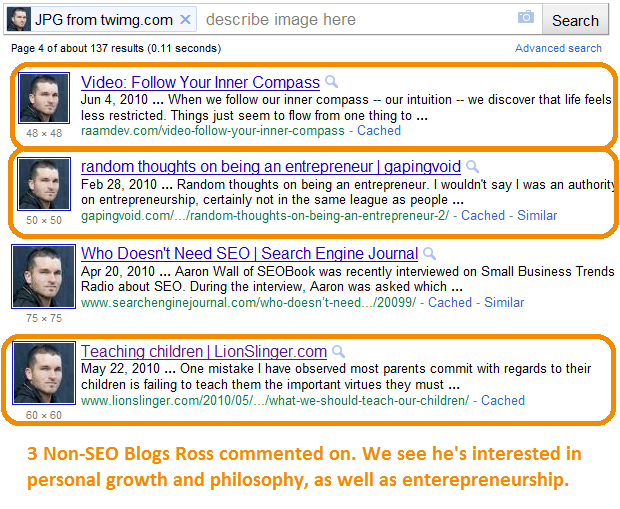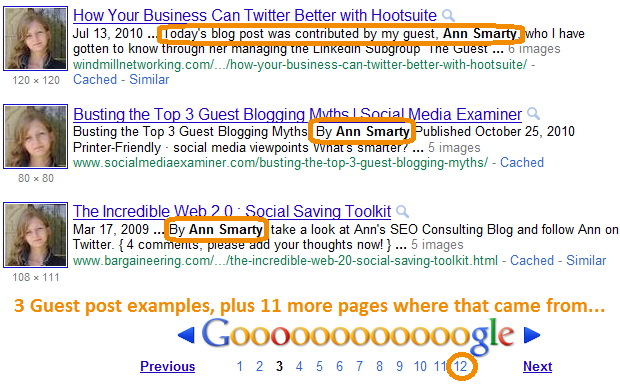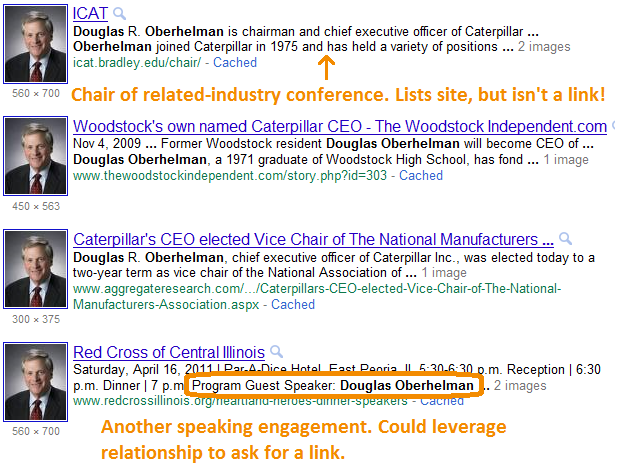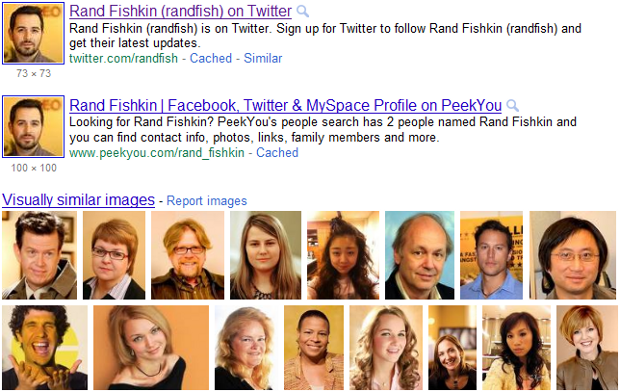3 Ways to Use Google's New Search by Image for Link Building
The author's views are entirely their own (excluding the unlikely event of hypnosis) and may not always reflect the views of Moz.
As you may have heard, Google recently launched a new feature called Search by Image. While experimenting with the feature, I identified three scenarios where search by image has a distinct advantage over traditional approaches for finding link opportunities.
First, some background. To explain it simply, you can now use images (either a URL of an image, or one you upload) as your search term. The goal is to point you to websites that are related to and/or contain information about the image. More background can be found at the Google blog.
1. Get Background on Industry Influencers and Linkerati
As Rand often discusses, identifying people's interests and using them to create connections are a great way to get on influential people's radar. If done right, this will also result in exposure and links.
Some of the most influential people in the SEO space are also the best at personal branding. Ross Hudgens recently wrote a YOUmoz post on how to make your brand more consistent on and offline. Ross is someone who I've been reading and been influenced by a lot lately, and he's also very consistent about using the same picture of himself, so I figured I'd use him for our first example.
When I tested the new Google Search By Image feature using his profile picture, I found many of the image results are attached to comments Ross has left:

Searching by Image, I quickly learned that Ross is active on several blogs about personal philosophy and self improvement. This is something I could use to connect with him on in the future.
Search By Image offers a distinct advantage because it provides a more filtered and targeted result set than simply wading through the backlink profile on RossHudgens.com.
2. Identify Link Opportunities by Searching for Popular Guest Posters
In the SEO community, Ann Smarty is the person who is the most synonymous with guest posting. Not just because of her site MyBlogGuest.com, but also because she's a prolific guest poster herself. Ann has many projects she promotes in addition to My Blog Guest, including ViralMom.com and SexySocialMedia.com.
Ann's also someone who's great at maintaining a consistent personal brand, so this makes searching by her profile image a great place to look for guest post opportunities:

This screenshot shows a couple different blogs that Ann has guest posted on that we could investigate and potentially approach about guest blogging there as well. And that's just scratching the surface!
Since Ann has multiple websites she promotes, Search by Image again provides an advantage over wading through backlink profiles because it allows us to find guest post opportunities that link to different sites.
3. Find Coverage That Didn't Result in a Link
Another way you can use Search By Image is to mine for press coverage and participation in offline activities that didn't result in a link. Searching by brand logos and "stock" CEO photos are a great way to find pages where a company or employee is getting highlighted.
For this example, I looked at the Fortune 500 and tried to pick a company in an industry that didn't seem too social or internet savvy, but would probably have a traditional PR presence. I went with Caterpillar and discovered the current CEO is Douglas Oberhelman. A quick (traditional) image search showed one photo that appeared again and again, so I figured that would be the best one to use to Search By Image.

My search resulted in a number of places that an SEO at Caterpillar could ask to get a link from. The two I pointed out above are places Mr. Oberhelman has spoken, which should be on the easier side to get links from given the existing relationship. In fact, the page that highlights him as conference chair has "www.caterpillar.com" with blue text and underlined, but it isn't a working link!
Search by Image has a distinct advantage over other research tools because it can identify significant coverage of your client or company that doesn't already include a link.
Bonus reason #4: Visually Similar Images Results Can Be Pretty Funny
Humor is always a nice way to break up a day of research:

No wonder this feature isn't already part of Open Site Explorer!
All jokes aside, give these techniques a try and let me know what you find in the comments. You can also give me a shout at the Internet Exposure blog or via our Twitter at @iexposure.




Comments
Please keep your comments TAGFEE by following the community etiquette
Comments are closed. Got a burning question? Head to our Q&A section to start a new conversation.